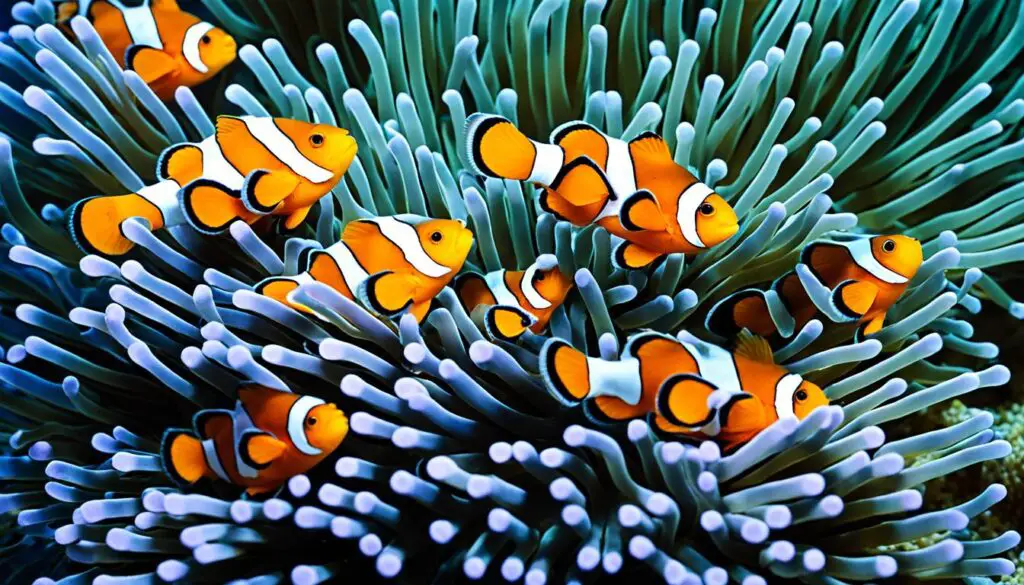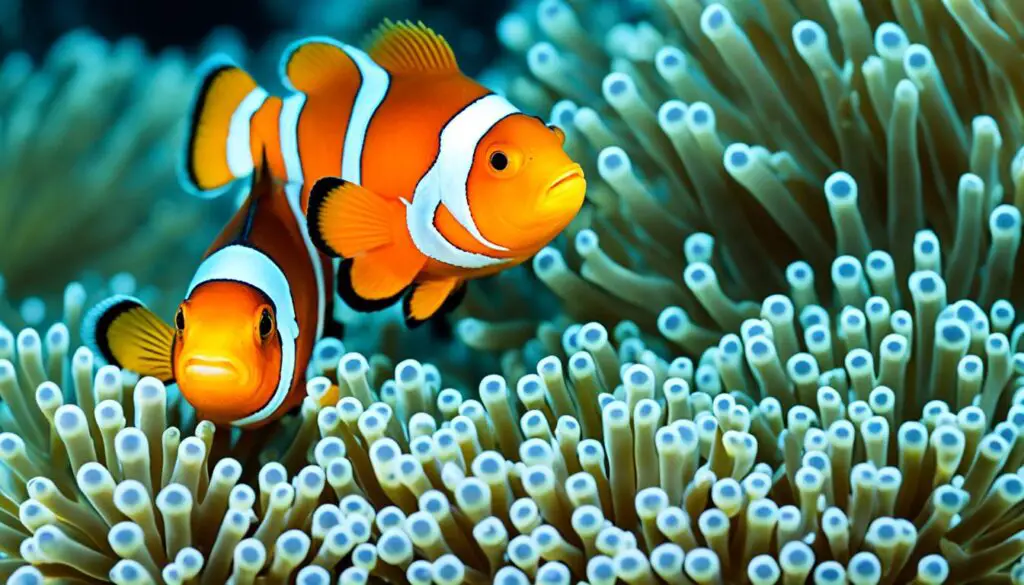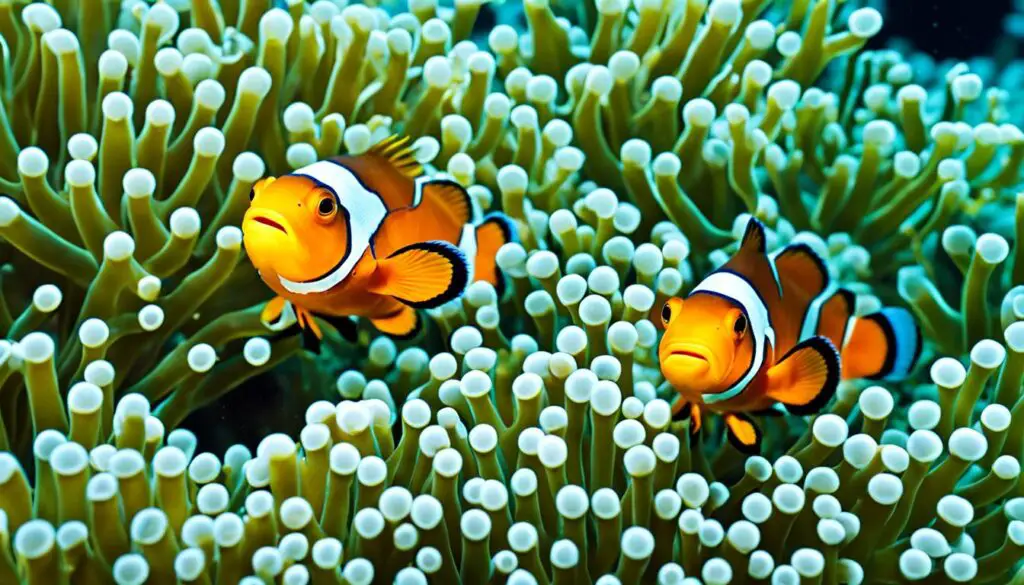Unlock the Secrets of Clownfish Tank Filtration: A Complete Guide
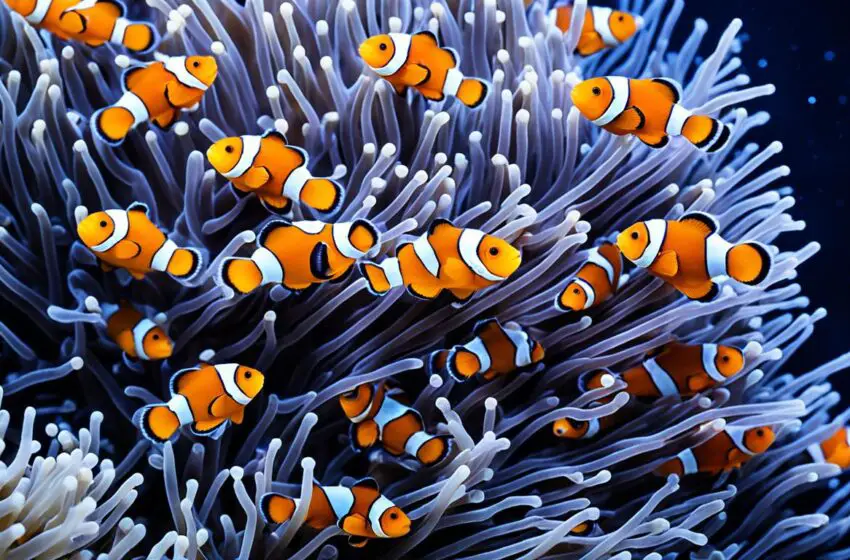
Clownfish breeding can be both fun and rewarding. But to succeed, you must set up the right tank filtration. The goal is to create a perfect home where the fry can flourish. This means providing a safe space that’s free from parasites. This guide has everything you need to know, thanks to expert tips and research.
Clownfish catch the eye with their bright colors and interesting habits, drawing many fans. Yet, raising them isn’t just about placing them in a tank. A good tank filtration system is key to keeping the fry healthy and alive.
When breeding clownfish, one big worry is parasites. These can harm the fry and slow their growth. To stop this, using the right filtration can cut down their numbers. This keeps the clownfish home a good place for them to grow strong.
Besides fighting off parasites, good filtration maintains clean water. As the fry grow, they create more waste. Without good filtration, the water quality can quickly fall. So, by picking the right filter, you’re looking out for the clownfish’s health.
This guide dives into everything you need, from tank setup to feeding the fry. It even shares tips to boost your success in breeding. Anyone, from newbies to seasoned aquarists, can follow these steps for a thriving clownfish tank.
Key Takeaways:
- Creating the right living space with good filtration is critical for success.
- Stopping parasites is key for the fry’s health and growth.
- Good filters help keep water clean from harmful stuff.
- This guide gives all the steps and know-how needed for a successful tank.
- Proper setup, knowing how to feed, and general care are crucial for success.
Setting up the Clownfish Breeding Tank
Setting up a good tank for breeding clownfish is key for success. There are important steps to take for the best breeding conditions.
1. Creating a Dedicated Breeding Tank
First, you need a separate tank just for breeding clownfish. It should be big enough for the adult fish and easy to observe. A tank of 20 gallons or more is best.
The tank must have a sponge filter. This filter is soft on the fry, allowing them to grow safely. It also helps keep the water clean and stable.
2. Culturing Rotifers for Fry Food
Then, create a culture of rotifers for the clownfish fry to eat. Rotifers are excellent first food for fry because they are tiny and full of nutrients.
Set up a separate container for the rotifers, using high-quality saltwater. Add a rotifer starter kit to the water. This will give them the best chance to grow and multiply.
3. Creating an Ideal Tank Environment
For a successful breeding, the tank must be perfect for the clownfish. Follow these tips:
- Keep the water around 78-82°F (25-28°C).
- Use lighting that imitates the fish’s natural day and night.
- Check and keep the water’s pH (7.8-8.4) and salt levels (1.020-1.025).
- Always test and adjust the water for a healthy tank.
“Setting up a clownfish breeding tank requires attention to detail. Providing the right tank environment, establishing a rotifer culture, and utilizing a sponge filter ensures a successful breeding experience.” – Expert Aquarist
By making a proper breeding tank, growing rotifers, and keeping the tank right, your breeding chances go up. Now, the tank is all set for the next step – taking care of the clownfish fry.
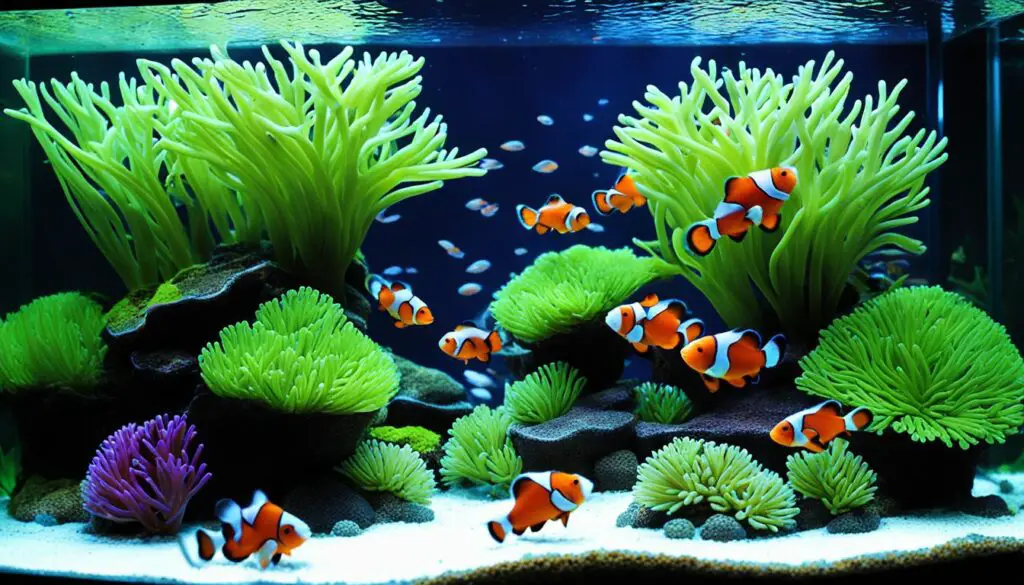
Feeding and Care for Clownfish Fry
Once clownfish eggs hatch and the fry go into their tank, I start their care. I focus on feeding them and keeping them safe for good growth. Key tasks include culturing rotifers, sticking to a feeding plan, checking water quality, and doing fresh water changes often.
Culturing Rotifers
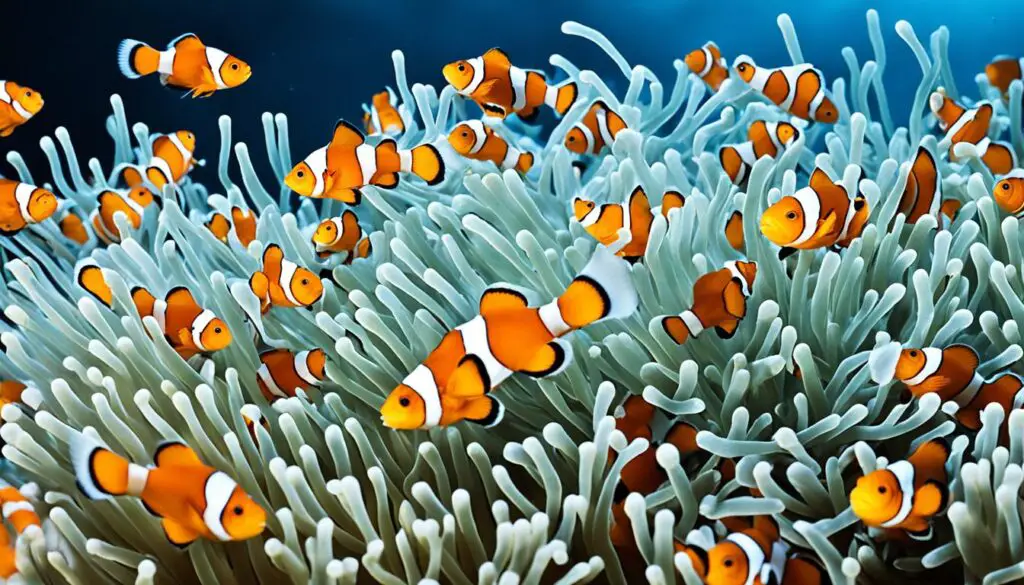
Rotifers are the main food for clownfish fry. I keep them in a different tank ready for feeding. This area has oxygen, light, and special food for the rotifers. This way, the fry always get the nutrition they need to be healthy.
Feeding Schedule
Having a regular feeding plan is very important for clownfish fry. I feed them small amounts many times each day. This imitates how they eat in the ocean and prevents water problems. The right diet at the right times helps the fry be healthy and grow well.
Monitoring Water Quality
I always check the water in the fry tank to keep it safe for them. Right temperature, pH, and salinity levels are key for their health. Bad water can stress and hurt the fry. So, I test and fix the water often to keep it right for them.
Performing Regular Water Changes
Changing the water in the fry tank often is crucial. It cleans out waste, extra food, and possible toxins. This keeps the fry’s home fresh and free of disease. I change the water regularly to make sure it’s always a great place for them to live.
Tips for Feeding and Care:
- Gradually increase the rotifer size as the fry grow, providing larger prey options for their expanding mouths.
- Ensure that the rotifers are appropriately sized for the fry to consume easily.
- Remove any uneaten food after each feeding to prevent water quality problems.
- Observe the fry closely for any signs of distress or illness, and take immediate action if necessary.
Taking good care and feeding of clownfish fry is my main goal. Using a set feeding routine, changing water often, and watching the water quality closely, ensures my clownfish breeding is a success. This way, the fry have the best chance to grow healthy and strong.
Conclusion
Clownfish tank filtration is key for successful breeding. Follow steps to set up the tank, grow rotifers for fry food, and give proper care. This increases the chance of breeding.
Keep water quality high, feed regularly, and do tank maintenance. This is vital for a healthy marine home for the clownfish.
Dedication to good filtration leads to successful breeding. A healthy, parasite-free environment is crucial. Effective filters and proper care help in creating this.
Clownfish tank filtration is a valuable effort. It boosts breeding and keeps the aquarium clean. With the right system, aquarists can watch their clownfish thrive.
FAQ
What role does tank filtration play in clownfish breeding?
Good tank filtration is key for clownfish breeding to go well. It keeps the tank clean and the fish healthy. This way, the fish avoid getting sick from parasites.
What are the necessary steps for setting up a clownfish breeding tank?
Setting up a tank for clownfish breeding requires a few important steps. You need a special tank just for breeding. Also, prepare food like rotifers for the baby fish. Use a sponge filter for water cleaning. And make sure the tank is the right environment for the baby fish to do well.
How should I feed and care for clownfish fry?
Caring for baby clownfish, or fry, is critical. You’ll need to keep rotifers as their main food. Stick to a feeding schedule and check the water often. Do regular water changes. These steps are key for the little fish to grow and thrive.
How important is tank maintenance for successful clownfish breeding?
Tank care is very important for successful breeding. It means keeping the water clean and the fish well-fed on time. Doing this makes a healthy home for the baby fish.

